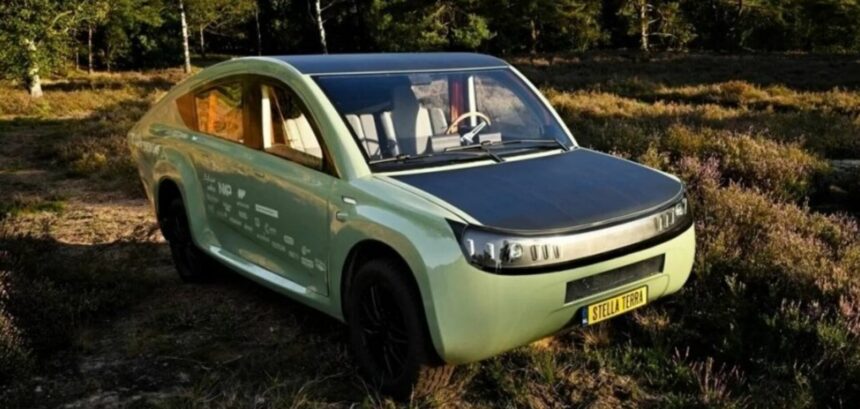A groundbreaking solar-powered car claimed to be the world’s first capable of extended off-road travel without recharging, has successfully completed a 620-mile (1,000km) test journey across Morocco and the Sahara.
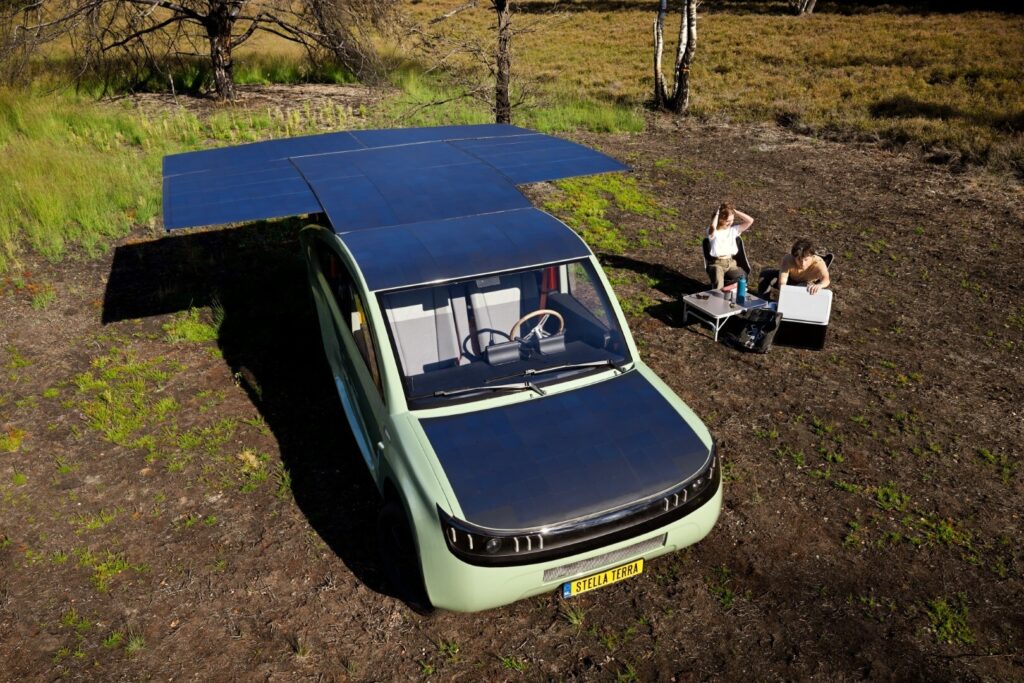
The Stella Terra, a two-seater vehicle designed by students from Eindhoven University of Technology, demonstrated its capabilities by navigating a range of challenging terrains in a final test of its lightweight construction and aerodynamic design. This innovative car is powered by multiple solar panels on its roof, boasts a maximum speed of 90mph (145kmph), weighs a mere 1,200kg (1.2 tonnes), and can cover a minimum of 440 miles (710km) on a sunny day.
Wisse Bos, the team manager of Solar Team Eindhoven, emphasized that the technology employed, uniting a lightweight frame with exceptionally efficient solar panels, surpasses anything currently available on the market. He stated, “Stella Terra must withstand the harsh conditions of off-roading while remaining efficient and light enough to be powered by the sun. That is why we had to design almost everything for Stella Terra ourselves, from the suspension to the inverters for the solar panels. We are pushing the boundaries of technology.”
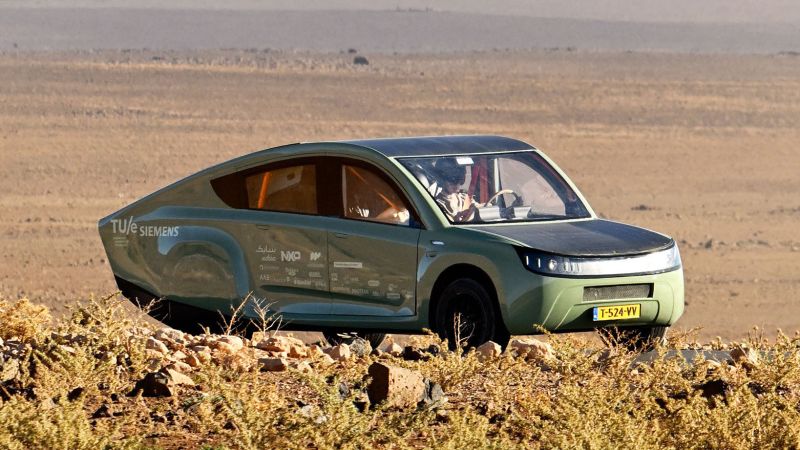
The car incorporates a rechargeable lithium-ion battery, allowing it to function in less sunny climates but with a reduced range. The solar panels generate enough electricity not only to power the vehicle but also for cooking and charging devices like phones or cameras. The 22 students, aged between 21 and 25, who spearheaded this project, took a year off from their studies to bring this solar-powered car to life.
During the week-and-a-half-long test journey across the dry and diverse landscapes of North Africa, from Tangier to the Sahara, the olive-green car experienced a steering system failure. However, it was promptly resolved, according to Bob van Ginkel, the project’s technical manager, who highlighted the car’s comfort in off-road conditions due to its lightweight nature.
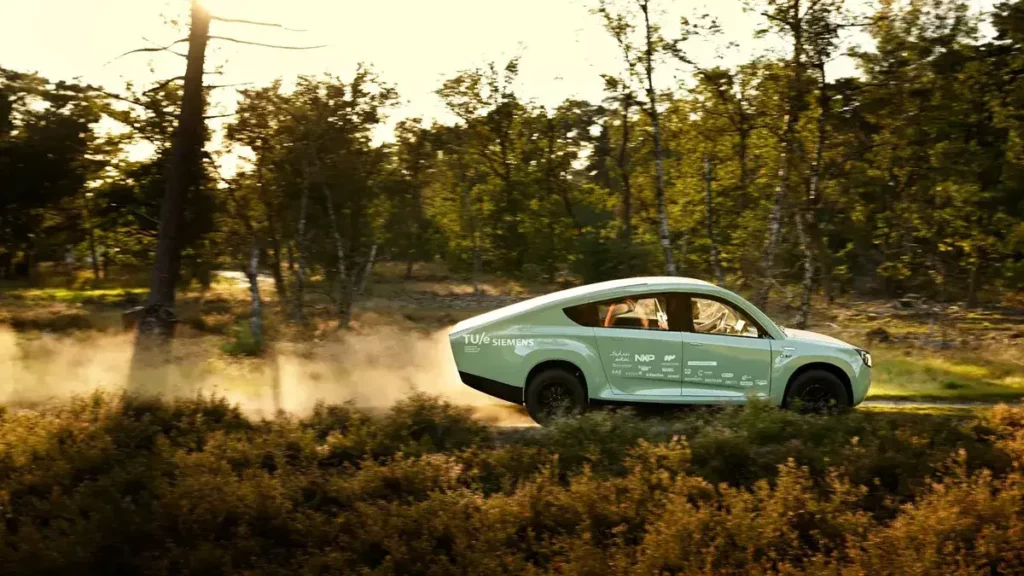
The car’s customized converter was discovered to be 97% efficient at converting sunlight absorbed by the solar panels into electrical charge, surpassing the initial expectations by a third. Standard panels on the market typically achieve around 45% efficiency, while most panels range from 15% to 20% efficiency. Britt van Hulst, the project’s finance manager, noted that further work is required before the design can be commercially available, but it offers an avenue for significant automobile manufacturers to explore.
One of the primary challenges for designers of solar-powered cars is the limited surface area for solar panels. Highly efficient panels capable of generating sufficient energy for extended travel are costly to produce. The Stella Terra project is nonprofit and has relied on sponsors for its budget, making it unable to provide a total project cost.
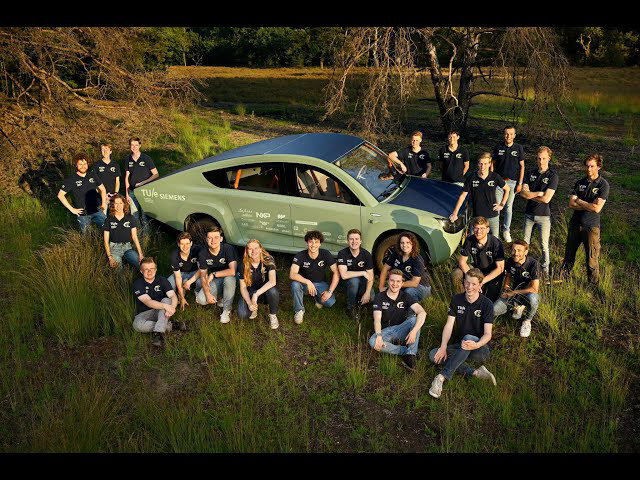
Manufacturing costs posed challenges for Atlas Technologies, a subsidiary of the Netherlands-based Lightyear, in its previous attempt to enter the automotive market with solar-electric cars, which were initially priced at €500,000. The company declared bankruptcy due to a lack of orders but has since reemerged with a new model, offering a vehicle at $40,000 with a 500-mile travel range between charges.


